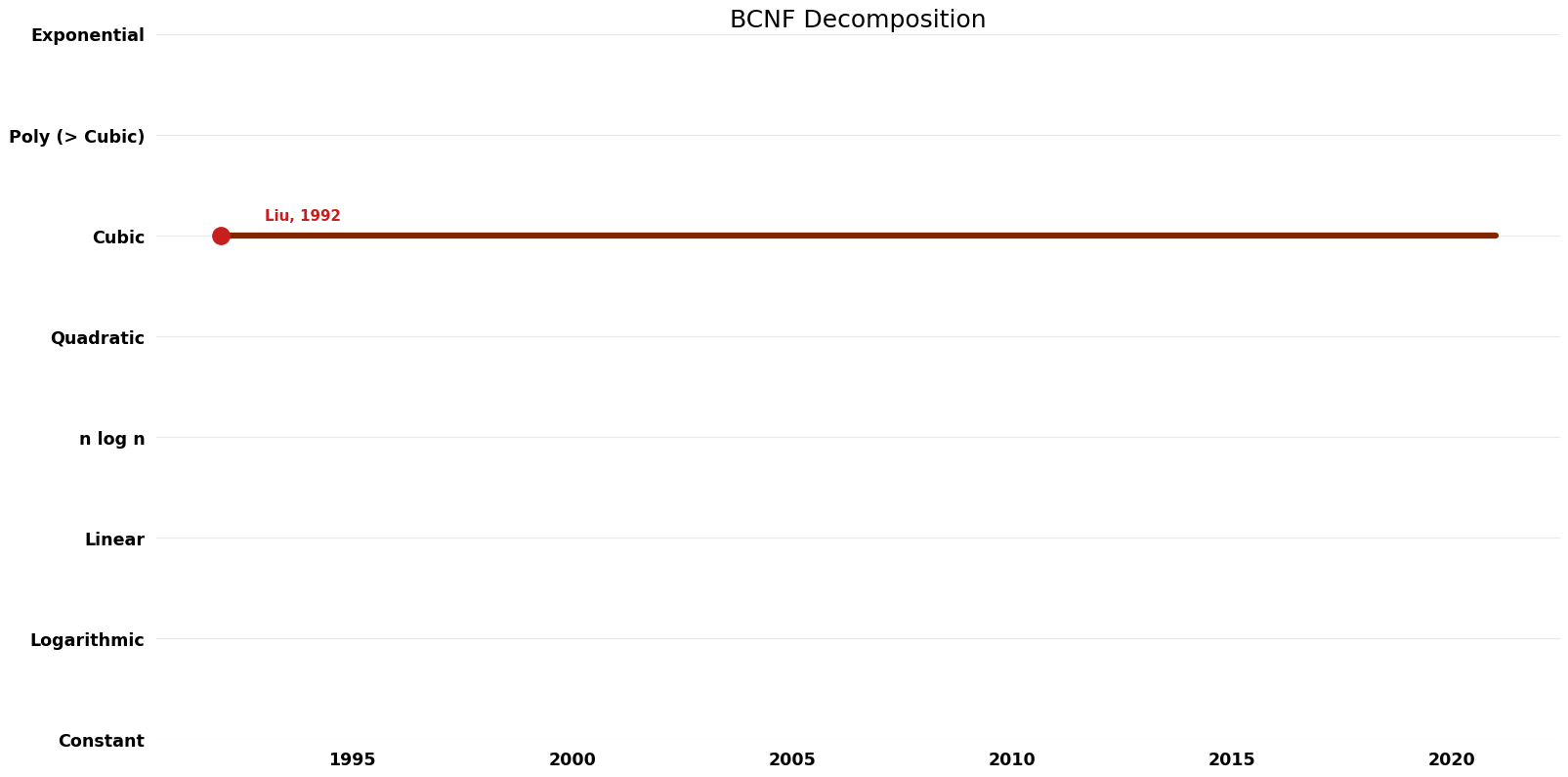BCNF Decomposition: Difference between revisions
Jump to navigation
Jump to search
No edit summary |
No edit summary |
||
| (2 intermediate revisions by the same user not shown) | |||
| Line 12: | Line 12: | ||
== Parameters == | == Parameters == | ||
$n$: size of database? | |||
$k$: number of functional dependencies | |||
== Table of Algorithms == | == Table of Algorithms == | ||
| Line 21: | Line 23: | ||
[[File:BCNF Decomposition - Time.png|1000px]] | [[File:BCNF Decomposition - Time.png|1000px]] | ||
Latest revision as of 10:09, 28 April 2023
Description
BCNF Decomposition is the problem of decomposing a relation schema into Boyce-Codd normal form (BCNF).
A relation schema $R$ is in Boyce Codd Normal Form (abbr. BCNF) if for all non-trivial FDs $X \rightarrow Y$ in $F^+$, $X$ is a superkey. In extending this notion to database schemas, we must be conscious of the UR-assumption. We say that $R_i = <ATTR_i,F_i>$ is in BCNF if the schema $<ATTR_i, F^+(ATTR_i)>$ is in BCNF, and $D$ is in BCNF if each $R_i$ is.
Related Problems
Related: Decisional BCNF
Parameters
$n$: size of database?
$k$: number of functional dependencies
Table of Algorithms
Currently no algorithms in our database for the given problem.
